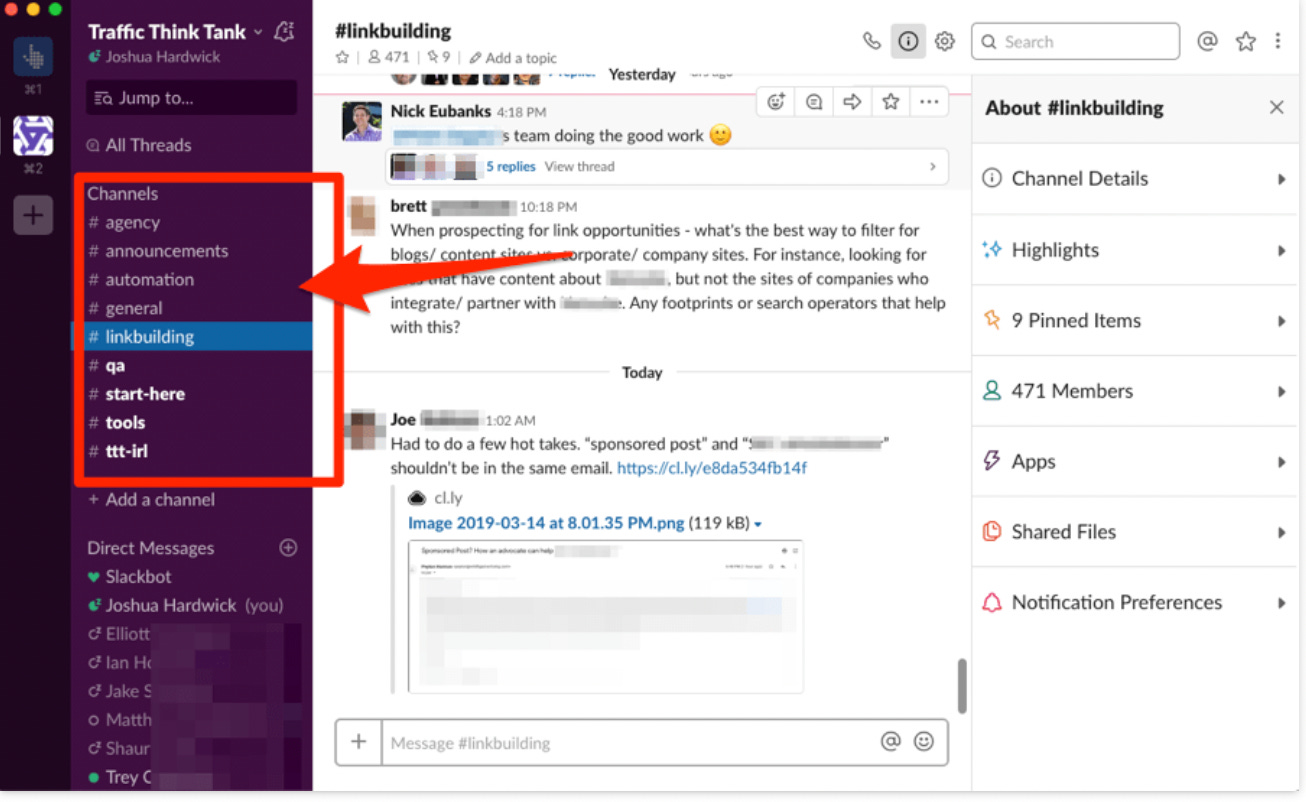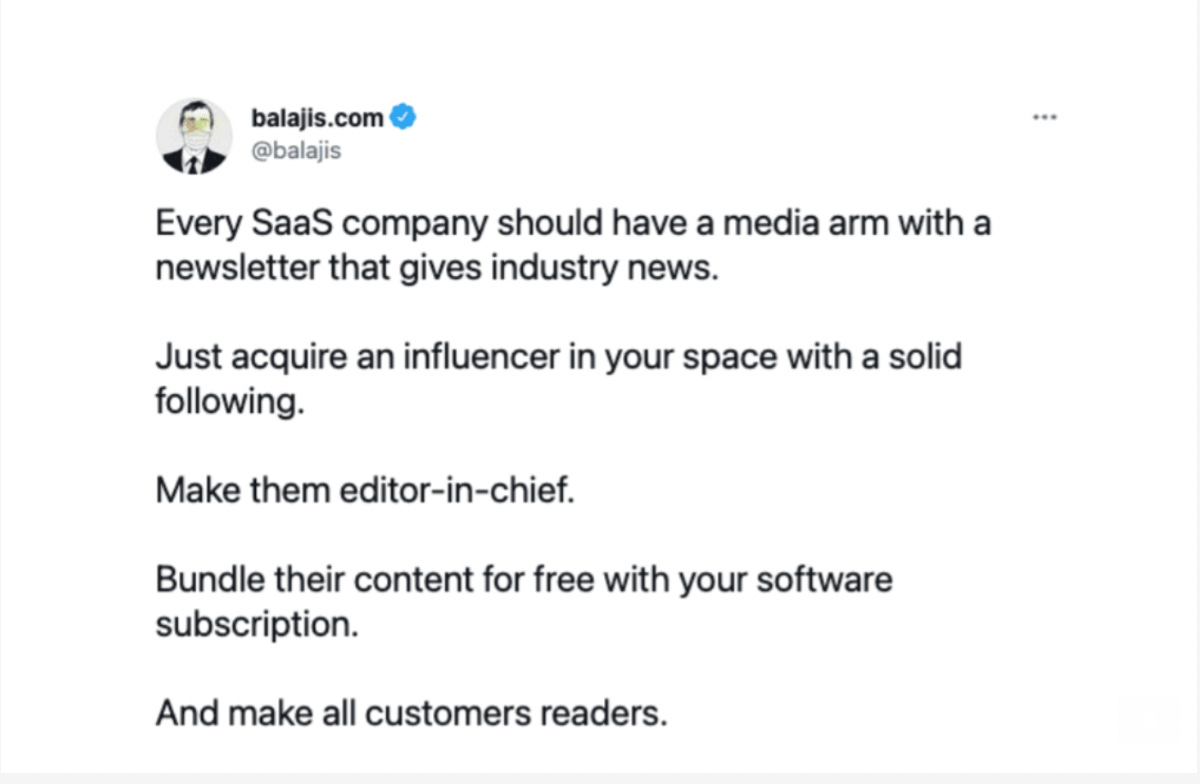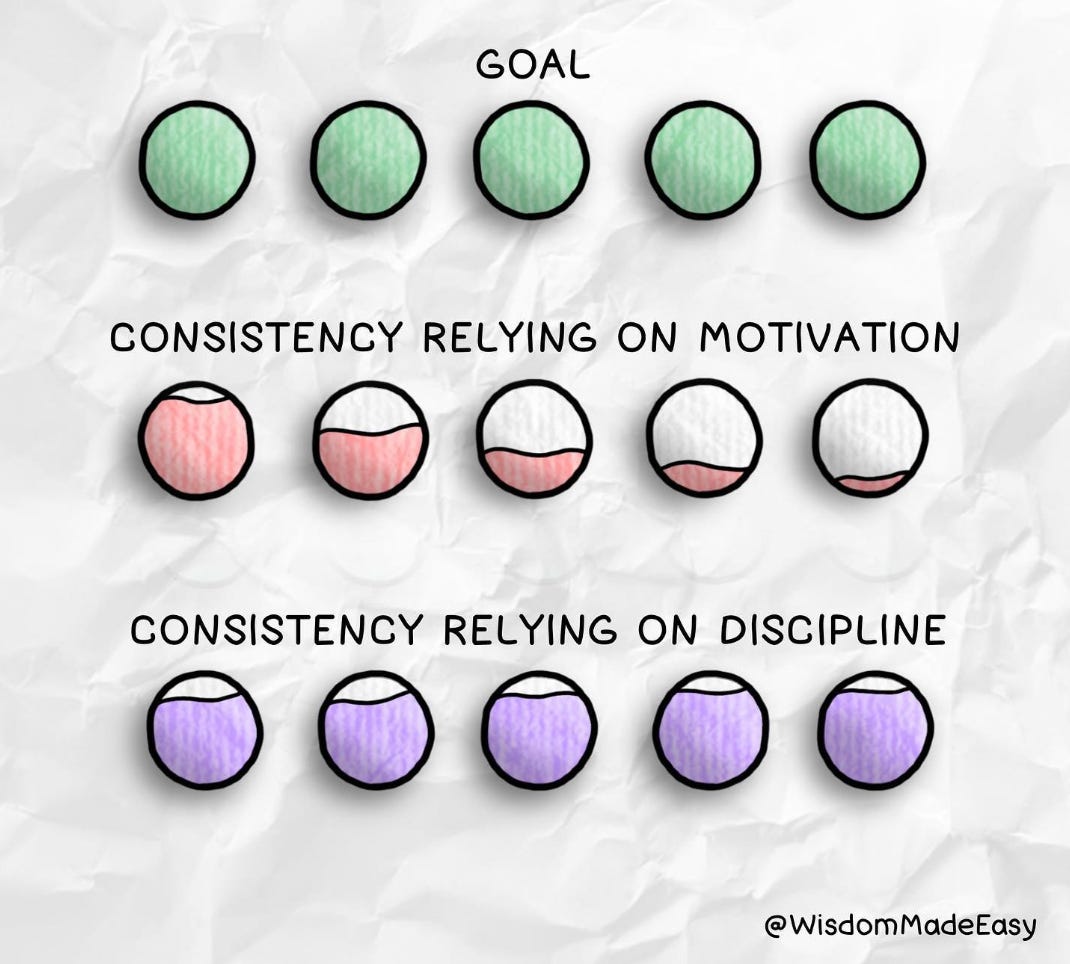QUOTE OF THE WEEK
"For years, we've been taught to make the Internet big. Go global. Scale-up your efforts. Create products for billions of people. More, more, more.
But there are other paths to success too.
Use the Audience-First Product method to make the Internet small. By writing online, you'll build a network around yourself and have a window into the ideas that ignite your soul. You become a magnet for like-minded people. Those people will share their best ideas, become your first customers, and help you grow your company. "
🔓UNLOCKING: ONLINE AUDIENCE & COMMUNITY BUILDING
Let's assume that you are interested in the "sustainability" topic.
You read a lot, listen to podcasts, following experts in this area.
The water footprint issue specifically draws your attention and you have a product idea that turns rainwater into usable water for houses.
Now, we'll think about two different scenarios.
Product-first: You are sure that you found the right product idea and built it thanks to your engineer & industrial designer friends. You put it on e-commerce sites and spend your money on ads. You wait for sales.
Audience-first: You started to share what you learned about sustainability along the way. You wrote on your blog and shared a bi-weekly newsletter and some short-form content on social media that focused on water footprint-related topics. In time, the number of your followers & subscribers who obviously share the same interest with you increased. They like engaging with you by sharing their appreciation, asking questions and asking for your consultancy even in some cases.
After a while, you shared your product idea with your audience. You got their opinions and made iterations accordingly. When it was launched, you first announced it to them as well.
In which scenario do you think that;
you end up with a better product that addresses the core needs?
the interest in your product will be higher?
you sell your product faster with minimum marketing investment?
your product will be in the hands of people who will really use it?
The answer is 2, obviously.
And this is the power of building an audience/community, aka the power of building trust before product.
🔦DEFINITION: WHAT IS ONLINE AUDIENCE vs. ONLINE COMMUNITY?
It is worth clarifying the confusion about "audience" and "community" here.
These two concepts are used to replace one another but are different enough to separate.
The online audience is the group of people who care and follow what you do, say, create or offer as a service/product on online channels.
Followers on social media, newsletter subscribers and blog readers are your audience.
Creating an engaged audience base is like a superpower of today's online business world.
You can contact your followers via social media or by e-mail. You can discuss ideas; you can sell your products/services.
As expected, it cannot be easy to ensure engagement when it is vast. Communication can be one-way; you say, they listen.
Moreover, people who comprise your audience don't know each other, so there are no cross-relations.
What about building a community?
The interest and engagement level of people among your audience vary.
You can gather the most interested ones open to connecting with each other on a private online platform and form a committed online community.
So, in most cases, a community is built out of your audience.
Building and managing a community requires an intentionally created space that is open only to members on platforms like Slack, Discord or more advanced options such as Mighty Networks and Circle.
Community members love the idea of belonging and being a part of something bigger. They are open to taking accountabilities for moderating discussions, co-creation, helping each other and growing together.
For example, you can join a Slack community dedicated to SEO topics to accelerate your learning in this area, get support when needed or widen your network among SEO enthusiasts.
Juts to get an idea, you can check the top communities in this area listed by Ahrefs in an article.
There are thousands of free / paid communities for diverse topics.
Building only an audience or community alone or both is OK, depending on your purpose.
A community is a more intimate and connected formation that serves well for co-creation, support and networking.
An engaged audience can also accompany you along the ride and help when needed.
Both can potentially monetize your work if you provide high-value content that consistently addresses their needs.
🔎 DEEP DIVE: WHY IS IT IMPORTANT TO BUILD YOUR AUDIENCE/COMMUNITY?
BETTER UNDERSTANDING OF NEEDS AND VALIDATION OF IDEAS
High-quality engagement with the target audience/community includes continuous feedback loops and support. This engagement allows co-creation, validation of ideas and making iterations on your product/service, which will eventually create efficiency and improve the quality of your work.
EFFECTIVE & AFFORDABLE DISTRIBUTION OF A SERVICE & PRODUCT
Once you gather people around a topic by providing valuable content and building trust, there will be no one who is more ready to buy whatever product/service you launch. So today, monetizing trust is the most sustainable way of doing online business.
This reality is valid not only for solo creators but also for bigger companies.
The cost of acquiring new customers via paid channels (like Google ads, Instagram ads) becomes more expensive day by day. (CPC for Facebook Ads: 0.50 USD in Sep '21 vs. 0.31 USD in Jan '21, Source: Sifirdan Globale)
As a result, we have been witnessing bigger companies acquire existing communities & audience bases to expand their user base more affordably and less effortlessly.
A few examples:
Payment infrastructure company Stripe acquired the indie hackers community Indie Hackers in 2017
And recently, SEO & market research tool Semrush acquired Backlinko, which has 500 million + visitors who are interested in SEO.
ACCELERATE THE LEARNING CURVE
If you truly believe in continuous learning, you have a lot to discover via building an engaged online audience group & community.
Meaningful relationships nurtured by feedback, information exchange, diverse experiences, and the chance to gather support from different levels of expertise help speed up the learning process, enrich your know-how and broaden your vision.
Moreover, it enables you to get an answer to any question you will ask in the fastest way. You can save hours of searching on Google.
PSYCHOLOGICAL SUPPORT
Being part of an online community shaped around common interest areas, professions, learning a skill, etc., provides big-time psychological support to both the creator and the members.
As a creator, you can share your journey with all critical milestones.
It feels good that you are not alone and some people are ready to help you, learn from you, and cheer you on at each stage.
It also creates accountability. Especially if you are a solopreneur, a feeling of accountability helps you deal with motivational ups and downs and maintain your discipline, which is crucial for reaching goals.
For the members, it also meets the need for a feeling of belonging. People want to feel connected and be part of a group with similar objectives.
To sum up, it is a clear win-win situation.
Building authentic relationships and feeling support along the ride helps both sides.
🧐 SCEPTICAL ZONE: POSSIBLE CHALLENGES & DOWNSIDES
It is too difficult to build and manage. Does it worth it?
Yes, it takes time, patience and resilience to build and manage an audience & community.
It requires creating high-value content maybe for years.
Building trust can never be easy.
However, it is the most strong weapon and the most sustainable way to monetize your work in the end, considering how difficult and expensive to reach your target audience via paid channels which is the other alternative.
According to Trends.vc report, Atomic Habits was published after James Clear published posts twice a week for years." But he is James Clear now! So which ad campaign can beat him?
Another striking example is Ali Abdaal. He started to create content in 2017, and he had published more than 300 videos for 2+ years consistently before he began to make +100k USD. On the way, he pivoted his target audience until he found the ideal niche for him, invested in his learning and didn't give up when he didn't see any progress.
In 2021, he made 4.5 million USD. No more words on this :)
Building audiences & communities is a long-term game. If you are looking for a shortcut to make money, this is not for you.
Audiences & Communities with hundreds of thousands of people are exceptional cases. How can I generate income with a small audience base?
The numbers don't matter. If you manage to build true fans, they will not leave you.
In his famous essay called 1000 True Fans, Kevin Kelly mentions that you can make a living off your creations if you have 1000 "true" fans.
Furthermore, Li Jin raises the bar and claims that having 100 "true" fans is more than enough.
📦 WRAP-UP
Today's creators & entrepreneurs are stronger than ever and don't need gatekeepers in any form to build their audience.
This is the era of INDIVIDUALS' POWER and DEMOCRATIZATION OF DISTRIBUTION.
Depending on your objective, you can proceed with an engaged or broader audience base or focus on a committed community.
Regardless of your preference, creating meaningful content, serving a specific problem/need and providing actual value are at heart.
More importantly, audience/community building takes time and requires patience and consistency. So don't be afraid of making iterations, hang on and don't give up.
Don't make money your priority as long as you have the chance of not doing it. Instead, focus on addressing needs, creating value, learning and enjoying the ride.
If you offer valuable content and build trust, there is no way for you not to manage monetizing your service/product.
This short wrap-up for such a big topic is based on my research on dozens of real-life examples, resources, thought leaders' opinions and my humble learnings & observations.
🚀 Next week, we will talk about how you can create your audience/ community, relevant tools&platforms and how to monetize your work.
Don’t miss it!
💫 INSPIRE: REAL-LIFE EXAMPLES & CASES
Trends.vc: Tech newsletter with 40k+ subscribers and 1k+ paid community members.
Dru Riley created it after three years of reading, traveling and some projects like a failed app, a semi-successful book and two data as a service companies, which he defines as short-term wins. Listen to his story in his own words.
NomadList: A global community of remote workers living and traveling around the world.
Since its launch in 2014, Nomad List has received 117,000,000+ visits. It is an open start-up sharing all its metrics and explaining the project details on a comprehensive FAQ page.
Indie Hackers: A community of indie hackers sharing their stories, learnings, accomplishments, and asking each other questions. Read & Listen "How Courtland Allen Grew Indie Hackers with Content, Consistency, and Community" to learn how he built Indie Hackers when he had six months of runway in his bank account.
Makerpad: A global community for no-code makers worldwide who want to build projects without writing code. Check the 100DaysofNoCode challenge backed up by a private community.
Superpath: Community for content creators with 8k+ members on Slack.
The founder, Jimmy Daly, shares the Superpath journey and his learnings transparently in Superpath: Zero to One article.
Wall Street Oasis: The largest online community focused on careers in finance, proving the importance of niching down.
Read how its founder, Patrick Curtis, grew a $140K/Month Online Community after getting fired at 24.
Kat Norton, aka Miss Excel: She makes learning Excel fun with her creative videos full of music, dance and energy. She has grown a community of 1,000,000+ people over Tiktok & Instagram and earns $100,000 daily. Check the full story here.
Yoga with Adrienne: Youtube channel created by Adrienne Mishler with a huge global audience of 11.4M subscribers.
Check her article in Telegraph and her interview with British GQ to inspire by her journey.
Francesco Ciulla: Growing an online audience with 123k followers on Twitter and 2000+ community members on Discord.
Read "Building an Online Audience in Tech🐦" to learn how he interviewed 100 tech leaders in 100 days and built his audience from zero to 35k followers in less than one year.
🗂 GAIN PERSPECTIVE: HANDPICKED PIECES
How to Build an Audience Even if You're Nobody by Neil Patel
How to Leverage Twitter to Build an Audience and make $100,000 writing on Twitter
The 10-Step Process for Building a Thriving Community From Scratch
3 Ways to Convert Your Social Media Audience into Engaged Community Members
Audience-First Products by David Perell
📚STUDY: RESOURCES TO LEARN MORE
30 Experts in 30 Days: Insights from 32 E-mail list builders into How They Built Their List aka Audience
Hypefury Blog on growing an audience on social media
Tweet100: 100 Days Challenge Publishing more on Twitter
Podcast Insights: Guides on how to start and grow a podcast
Course: Smart Passive Income Courses on building an audience and monetizing your work
Course: Audience Building Cohort-Based Course on Maven by Blake Burge
Book: The Embedded Entrepreneur: How to Build an Audience-Driven Business
🛎 THREAD OF THE WEEK (Click to reach the whole thread)
📣 Notes from Digiboarding:
My objective for Digiboarding is to make it comprehensive yet easy to digest.
I will make iterations until I find the ideal version.
This week, I created the above flow with specific sections within this context to apply to all issues.
It is just the first try and subjects to change 100%.
PLEASE, share whether you like it and/or any suggestions for further improvements.
Any topics you want to learn more about? Please shoot me an e-mail.
You know that Digiboarding is a build-in-public initiative. I will share an update on current performance vs. objectives within this context.
Currently, I'm struggling a bit with time management.
Creating content takes more time than I expected, which caused me not to share one issue every week so far as promised. Sorry for the inconvenience and I assure you that I am working on creating a more consistent system.
See you next week!
Resources of the article:
“STUDY” and “GAIN PERSPECTIVE” sections +








Thanks for giving Sıfırdan Globale as a reference. :)